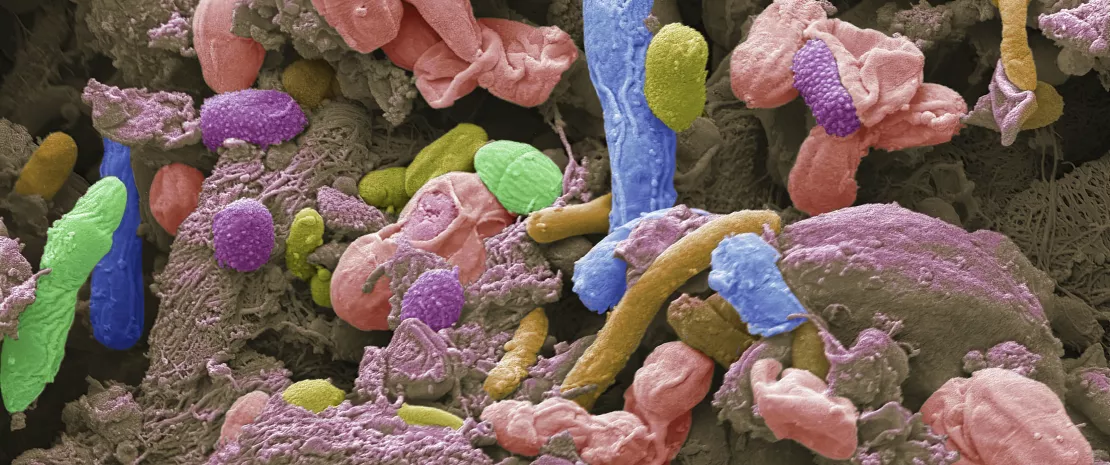The HACK index: identifying keystone gut species for better patient outcomes
Defining a healthy gut microbiome is challenging due to individual variability. The HACK index ranks 201 gut bacteria by prevalence, stability, and disease links, giving clinicians a robust, reproducible tool to assess and optimize gut health. This article is part of a broader effort to define the human gut microbiome and support healthcare professionals with data-driven, practical tools.
Sources
This article is based on scientific information

About this article
Author
If you are reading this piece, you probably know that the microbiome is foundational to health across so many systems, right from metabolism to immunity and even cognition. But defining what a truly "healthy" gut looks like – one that's not just present but resilient and linked to wellness – has been a massive challenge given its incredible variability across people and places.
A new study published in Cell Reports 1 brings a fresh view with the Health-Associated Core Keystone (HACK) index. This isn't just another list of microbes; it's a single, robust ranking of 201 key gut bacterial species based on their consistent association with crucial aspects of host and microbiome health.
Decoding the HACK Index: What makes a Keystone?
The researchers built this new ranking using a staggering dataset of over 45,000 gut microbiomes from 141 study cohorts across 42 countries and spanning 28 different disease categories. They ranked 201 common gut taxa, microbes, by scoring them on three critical properties:
- Core Association: How prevalent and consistently associated with the community composition a taxon is in non-diseased individuals. This was assessed using a novel 'Remove-Renormalize-Relate (3R)' approach on over 18,000 non-diseased samples
- Longitudinal Stability: How strongly a taxon's abundance is associated with less change in the microbiome over time within individuals. This used data from over 9,000 longitudinal samples.
- Health Association: How consistently a taxon is negatively associated with disease across multiple categories. This involved analysing over 18,000 samples from disease-control cohorts covering 28 conditions.
These three scores were combined into the final HACK index for each taxon. Analysis confirmed the robustness of this index across sequencing techniques and lifestyles. The HACK ranking held strong regardless of sequencing technology (WGS vs. 16S) and across industrialized and non-industrialized populations, and was validated in 14 independent cohorts. This robustness suggests it captures something fundamentally linked to health, transcending geographical and technical differences.
Not all core members are equal
The study revealed several surprising insights that challenge common assumptions in microbiome research.
Perhaps most striking is the finding that some taxa consistently identified as core-associated – meaning prevalent and tightly linked to the community in non-diseased guts – were also previously linked to multiple diseases. Table-based analysis revealed that Collinsella aerofaciens is one such example. This highlights that simply being a common resident doesn't guarantee a health benefit and reinforces the importance of combining community association with abundance stability and disease association – as the (sidenote: HACK Index A composite ranking of 201 gut bacterial species based on prevalence/community association, stability, and disease associations. ) does.
Clinical resource spotlight: International Microbiota Observatory
HACK gut microbiota isn’t the only data-centric tool helping to enrich knowledge of the gut microbiota.
The International Microbiota Observatory provides global data insights from over 30 countries, tracking the evolution of the human gut microbiome across populations and disease states.
Clinicians can leverage this resource alongside the HACK index to contextualize patient microbiome analysis across regions.
From diet to therapeutics
So, what does this mean for clinical practice? The HACK index provides a powerful new tool.
The study showed that a simple score derived from the mean ranked abundance of the top 17 HACK taxa (HACK-top-17-score) performed comparably or better than existing microbiota/microbiome health indices in distinguishing between diseased and non-diseased states, as well as stable and unstable microbiomes.
In addition, analysis showed a significant positive correlation was observed between a taxon's HACK index and its association with a positive response to immune checkpoint inhibitor (ICT) therapy. This suggests the HACK index could potentially help identify gut microbes most likely to support therapeutic success in oncology and beyond.
Moreover, the index also links microbial patterns to diet. Higher HACK scores correlated with microbes more responsive to Mediterranean-style food interventions, indicating diet-based therapeutic potential.
Diet is not only a modifiable factor, but also a diagnostic lens for understanding the microbiome’s response to specific food patterns.
Green Mediterranean diet: what links between cardiometabolic health and gut microbiota?
This article sheds new light on the intricate interplay between human microbiota and health. The HACK index marks a significant step toward a functional, clinically applicable definition of a healthy gut. And while more work is needed, especially in strain-level analysis, this robust and reproducible analysis framework already opens new paths for diagnostic tools and therapeutic targets – especially when integrated with human dietary patterns and response to medical interventions.
Analysis of such tools and indexes through large-scale microbiome data and clinical application tables is now essential in advancing personalized medicine. As gut research evolves, tools like the HACK index could guide interventions grounded not just in microbial presence, but in functional stability – from food-based strategies to immune-based treatments.
Professional toolbox: explore more clinical resources
Need support applying these concepts in practice? The Biocodex Microbiota Institute offers a dedicated toolbox for professionals, with accessible overviews, videos, infographics and diagnostic tools. All science-based educational content. Have a look!













